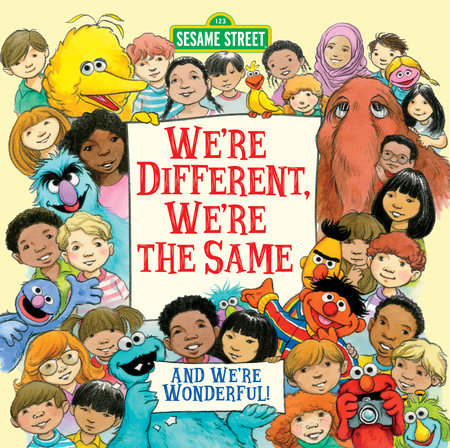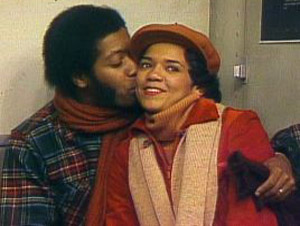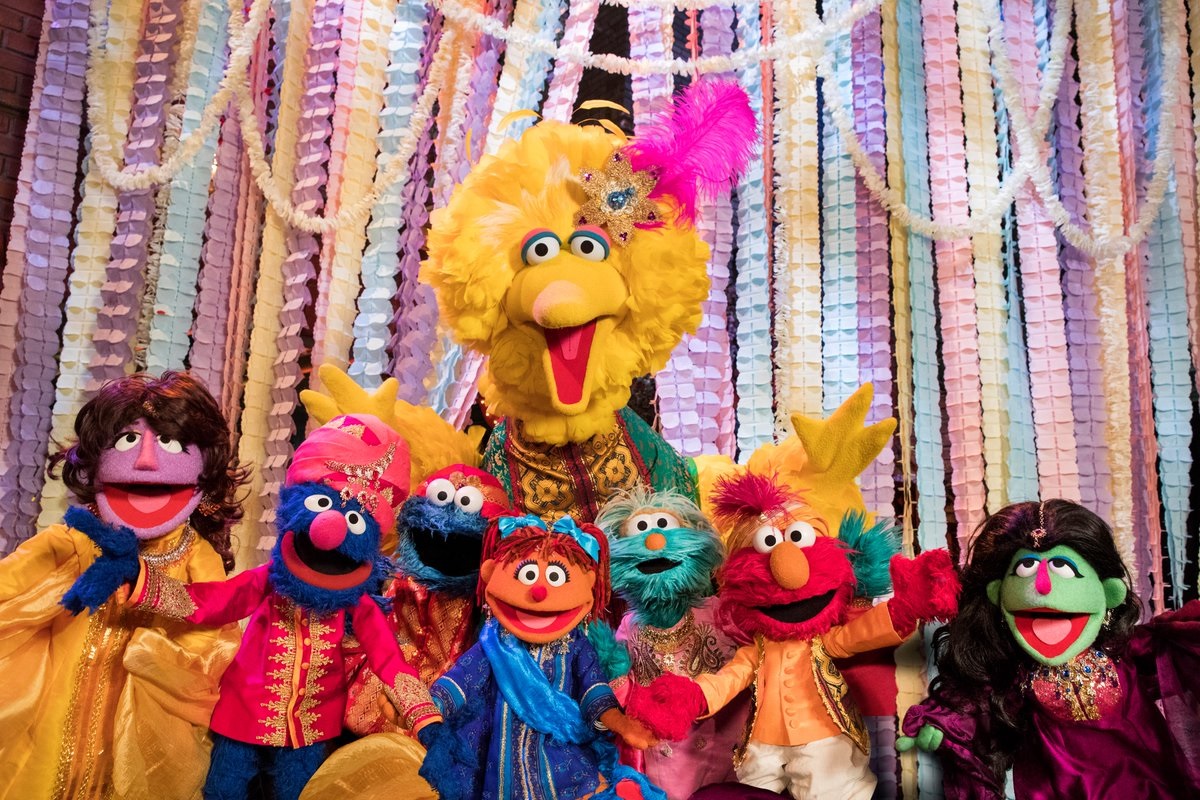Big Bird, Grover, Elmo, Zoe and other Muppets have fun exploring Indian traditions. (Sesame Workshop/Twitter)
As adults, the times right now are scary for us. But we’re scared as adults, think just how scary it must be for kids. They’re growing up in a society in which leaders of government act less mature and more irresponsible than any kid ever in existence. Not to mention the fact that race-based attacks are being emboldened by the ideologies of this president. President Trump wants to make America “great,” but he refuses to allow the country to actually be as fantastic as it could become; instead, he seeks to alienate and even remove the very people who make America what it is. For him and this administration, making America “great” means making America less tolerant and accepting and more suspicious and hateful towards others, especially others who are different than what Trump perceives as the norm.
With boogeymen around every corner, and the strangleholds of nativism and Trumpism on this country, how are we supposed to protect kids and show them that the way things are right now isn’t right? Of course, there are parents, guardians, teachers, and role models who make it their life’s work to steer children in the right direction. But there’s also another thing that can help get the job done–children’s educational programming.
This month on HBO, Sesame Street is teaching its young viewers the importance of cultural curiosity by bringing on Muppets from international Sesame Street productions. Zuzu from South Africa, Chamki from India and Lily from China will be special guests, showing Big Bird and the crew all of the cool things their various cultures have to offer. You can imagine what the episode(s) will be like; we learn along with our American Muppet friends why it’s important to be welcoming, open, and empathetic to others who are different than us. By learning that our differences can actually bring us together, kids learn that everyone brings something of value to the table.
The show doesn’t just indirectly tackle Trump’s hateful rhetoric; it also does it in your face as well. As The Guardian’s Adam Gabbatt wrote, Sesame Street took viewers on a cultural journey days after Trump’s election day victory. The show, then starting its 48th season, opened its premiere with Big Bird, Elmo, and other classic Sesame Street Muppets visiting the different neighborhoods of their native New York. “The gang travel to Chinatown, to a west African neighborhood, and to a predominately Mexican area,” Gabbatt wrote. “Mexico, and its citizens, were a particular target of Trump’s ire during his campaign.”
“Obviously in this day and age it seems to be a time when differences aren’t celebrated,” said head writer Ken Scarborough. “I think there’s a lot of distress in the world, there’s a lot of things that you look for simple solutions and simple answers to things and a lot of that has to do with ‘the other’.
It’s shows like Sesame Street that will carry the load parents and others carry to shepherd the next generation away from the destructive, insular politics of Trumpism and into a more caring, thoughtful, worldly outlook. But if you ask me, children’s television has always been a bastion of the core tenets of life–being kind to others and being open to understanding someone else, regardless of where they come from or what they look like.

As a kid, a good chunk of my life was dedicated to watching PBS. According to my mom, who also made educational games for me to play and created lo-fi DIY projects with me such as homemade play-doh, said I began reading at an early age thanks to Sesame Street. Sesame Street didn’t just teach me my alphabet; it also taught me lessons about empathy and concern for others. The show probably didn’t even know it was teaching me how to be an early ally for LGBT Americans, but it did–in complete honesty, I grew up thinking it was natural for Bert and Ernie to be in the same bedroom and share the same bathroom because I associated their relationship with my parents’. I literally remember thinking, “Well, my parents sleep in the same bed, so they just must be together like that.” It made sense to me, and it never came to my mind to question their relationship as anything other than that they were “together.”
But there were many moments when Sesame Street purposefully knew they were opening the minds of both kids and their parents when it came to acceptance of others. For instance, Maria’s relationship with David was before my time, the two revolutionized children’s programming by showcasing an interracial relationship (and a non-white interracial relationship at that). Maria went on to marry fix-it shop owner Luis, but their relationship also helped children understand and empathize with characters who might have had different backgrounds and cultural ties than them.

Sesame Street has had many diverse characters over the years, including Latinx characters like Luis, Maria and their daughter Gabi, African-American characters like David, Savion (yes, the famous tap dancer Savion Glover), Gordon, his wife Susan, their son Chris, Asian characters like Hiroshi (played by Gedde Watanabe) and Alan, Indigenous characters like Buffy (played by folk singer Buffy Saint-Marie) and her real life son Dakota, or as he was known on the show, Cody. It’s also had disabled characters like Linda, the local librarian and (unconfirmed) girlfriend of Bob, the resident music teacher, and Julia, an autistic character and recent addition to the Muppet cast. All of these characters are played honestly and without stereotype. The goal was for viewers to come away realizing that everyone, regardless of racial, ethnic, or cultural differences, share similar hopes, fears, dreams, and aspirations. Everyone wants to be–and deserves to be–treated with respect.
In fact, the majority of the shows I watched on PBS were all about encouraging inclusion, diversity, and empathy. From Mr. Roger’s Neighborhood, Barney and Friends and Reading Rainbow to Ghostwriter, The Puzzle Place, and Zoom, children’s television taught me the importance of learning from others and becoming a curious citizen of the world. From watching PBS, I learned that it’s not only okay to learn something new about someone else; it can also be fun and you can learn something about yourself in the process. I could write a blog post about each of these shows and what I gleaned from them, but suffice it to say that the lessons from these shows have kept influencing me to this very day; in fact, they make up the backbone of why JUST ADD COLOR even exists. If there’s any way I can spread the messages of inclusion and the importance of intersectionality and plain ol’ empathy for others, I want to do it. This website is just one way I’ve been able to pass what I’ve learned along.
It’s that type of spirit shows like Sesame Street want to embed into their young viewers. They have a proven track record of teaching kids constructive, helpful ways to engage with the world, and I’m certain they’ll continue to influence young minds for the better. So if you want to make sure your kid knows how to engage with the world, make them watch some seasons of children’s educational programming. Trust me, they’ll be better for it and when they grow up, they’ll continue the chain of spreading empathy and goodwill to the world.
